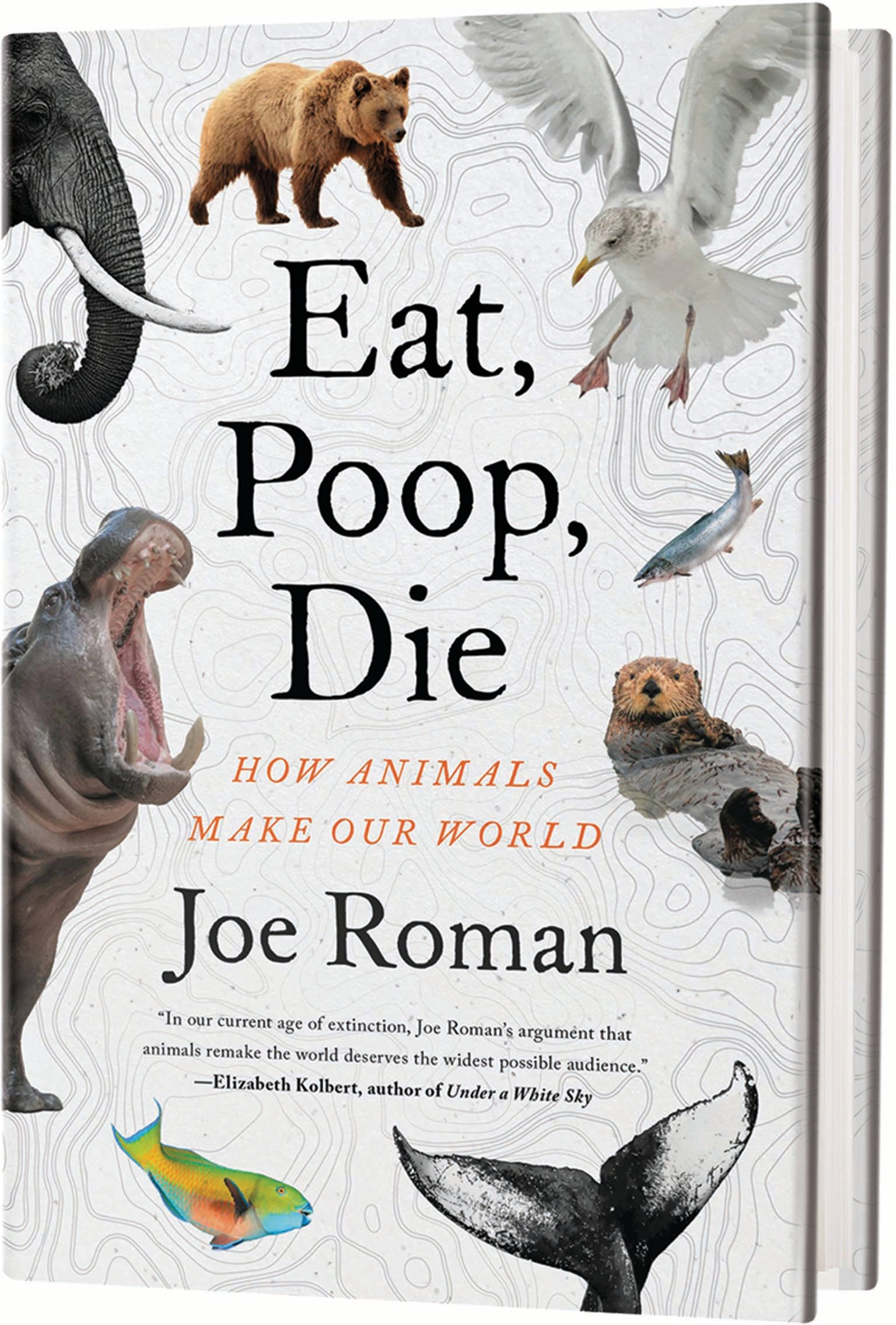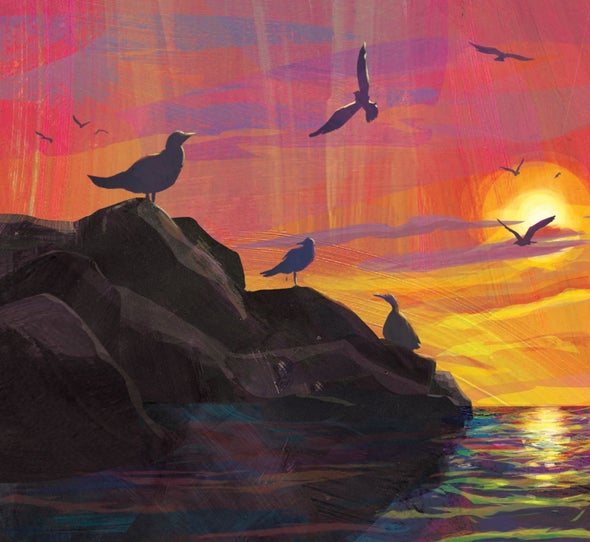NONFICTION
Eat, Poop, Die: How Animals Make Our World
by Joe Roman
Little, Brown Spark, 2023 ($30)
Looking across the Serengeti at herds of honking wildebeest, most of us would be awed by the exuberance of these migrating masses, resplendent in their magnitude. Not Joe Roman. The conservation biologist sees a vital distribution network that flows through the bodies of all those grazers, dispensing valuable mineral resources across ecosystems. To put it another way, Roman sees dumped feces and rotting carcasses.
To Roman, these features are no less wonderful. The author is something of a whale scat specialist, having spent 20 years collecting their excrement. “At times, they sparkle with scales, like the sun glinting on the water. Every whale defecation is unique,” he writes. Long ago Roman had a hunch that whales played a crucial role in moving nutrients from seabed to surface. The whales would dine on krill at the bottom of the ocean, then rise up to breathe and relieve themselves, releasing great clouds of fertilizer to feed the phytoplankton at the top, which in turn fed the krill.
In the same way that trees function as Earth's lungs, migrating animals—eating, pooping and dying along the way—circulate nitrogen and phosphorus from deep-sea gorges to mountain peaks and from the poles to the tropics. These elements form the basic building blocks of DNA and help to power our cells. “Animals are the beating heart of the planet,” Roman tells us. This becomes evident at the start of the book, when he visits the island of Surtsey off the coast of Iceland.
Surtsey was formed by a volcanic explosion in 1963, making the island younger than most of the scientists studying it. This fresh land offered an opportunity to document how animals build an ecosystem, poop by poop. The pioneers are the seabirds, whose fishy guano provides a nutritive anchor for air and seaborne seeds. Their feathers harbor invasive invertebrates, which in turn attract insect-eating birds. Then come the gray seals, whose fecal plumes generate green algal blooms that can be seen from space.
All this guano doesn't just spark life; it also can change the weather. The stench of ammonia hooks up with sulfur to form droplets that coalesce into dense clouds, reflecting the sun. Colonies of seabirds, then, are helping keep the Arctic cooler and dampening the effects of climate change “one splat at a time.”
Measuring the impact of guano may seem unglamorous—the ultimate crappy job, even—which may explain why such systems went overlooked for so long. In the past decade their study has sprouted a fresh science called zoogeochemistry. Roman travels the world to uncover salmon, bison and hippopotamus conveyor belts that nourish trees, savannas and rivers. He deftly dissects these otherwise invisible relationships with infectious curiosity—and a healthy dose of potty humor—to reveal the exquisite interconnectedness of life and death.
Not all waste is welcome, however. On the island of Surtsey, researchers are forced to perch atop lava boulders to deposit theirs straight into the crashing ocean. This strategy became necessary after an errant tomato plant sprouted from a visitor's night soil back in the 1960s. Elsewhere, human contamination has been significantly more catastrophic.
“The arrival of humans was like the onset of coronary disease to the animal circulatory system,” Roman writes. Humans and the domestic animals we consume today account for 96 percent of all mammals and 70 percent of all the birds on this planet. Together we produce about eight trillion pounds of poop a year. That's too much waste to simply wash away.
Humans have become the architects of giant industrial loops that push biological cycles over planetary boundaries. The artificial sequestering of nitrogen into fertilizer sparked a green revolution that enabled the human population to double. Phosphorus dug up in Morocco and dumped on agricultural land in the U.S. runs off into oceans causing algal blooms the size of Connecticut that suffocate all other marine life.
There is hope for change, however, and it starts with altering our relationship with our own bodily waste. Recycling urine, for example, could offset 13 percent of the demand for agricultural fertilizer and generate enough energy to power 158 million households. It would also save thousands of gallons of freshwater from being flushed down the toilet and reduce those suffocating algal blooms.
Roman sees the restoration of wildlife as equally essential. When sea otters were reintroduced to an Alaskan island, they triggered a trophic cascade that led to the return of offshore kelp. As well as harboring hundreds of biodiverse species, these towering algal forests also sequester carbon. Anecdotes like these help to make this one of those rare books that truly changes the way you look at the world. —Lucy Cooke
Lucy Cooke is a zoologist, documentary filmmaker, author, and National Geographic Explorer based in Britain.



